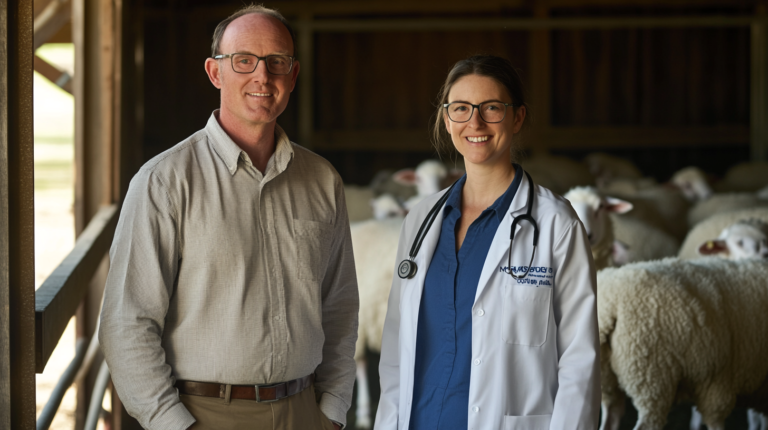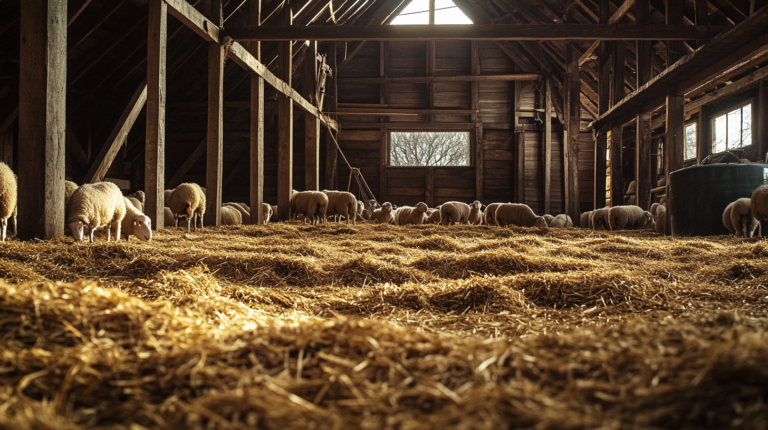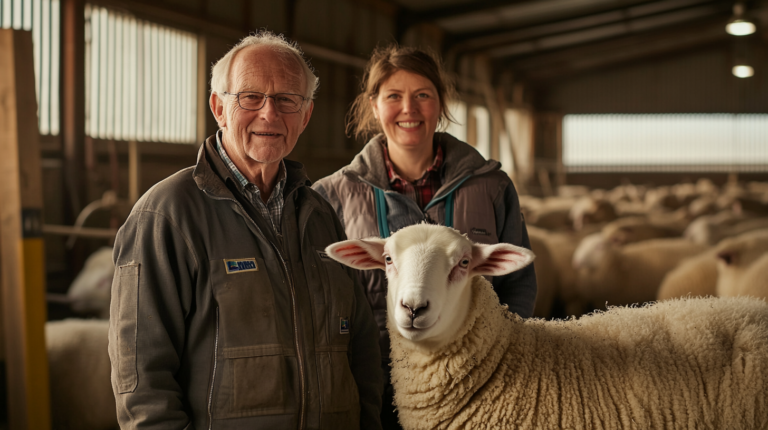Discover 6 essential prevention strategies for clostridial diseases in sheep, including vaccination, nutrition management, and environmental controls to protect your flock.
Table of Contents
Sheep producers face numerous health challenges in their flocks, but perhaps none as devastating and sudden as clostridial diseases. These deadly bacterial infections can strike seemingly healthy animals without warning, often resulting in rapid death with little to no time for treatment intervention. Clostridial diseases in sheep represent one of the most significant threats to flock health and productivity, capable of causing substantial economic losses through mortality, reduced growth rates, and increased veterinary costs. The bacteria responsible for these conditions are ubiquitous in the environment, making exposure virtually inevitable for all sheep. This comprehensive guide examines the nature of clostridial diseases in sheep and provides six evidence-based, essential prevention strategies that every shepherd should implement to protect their valuable animals.
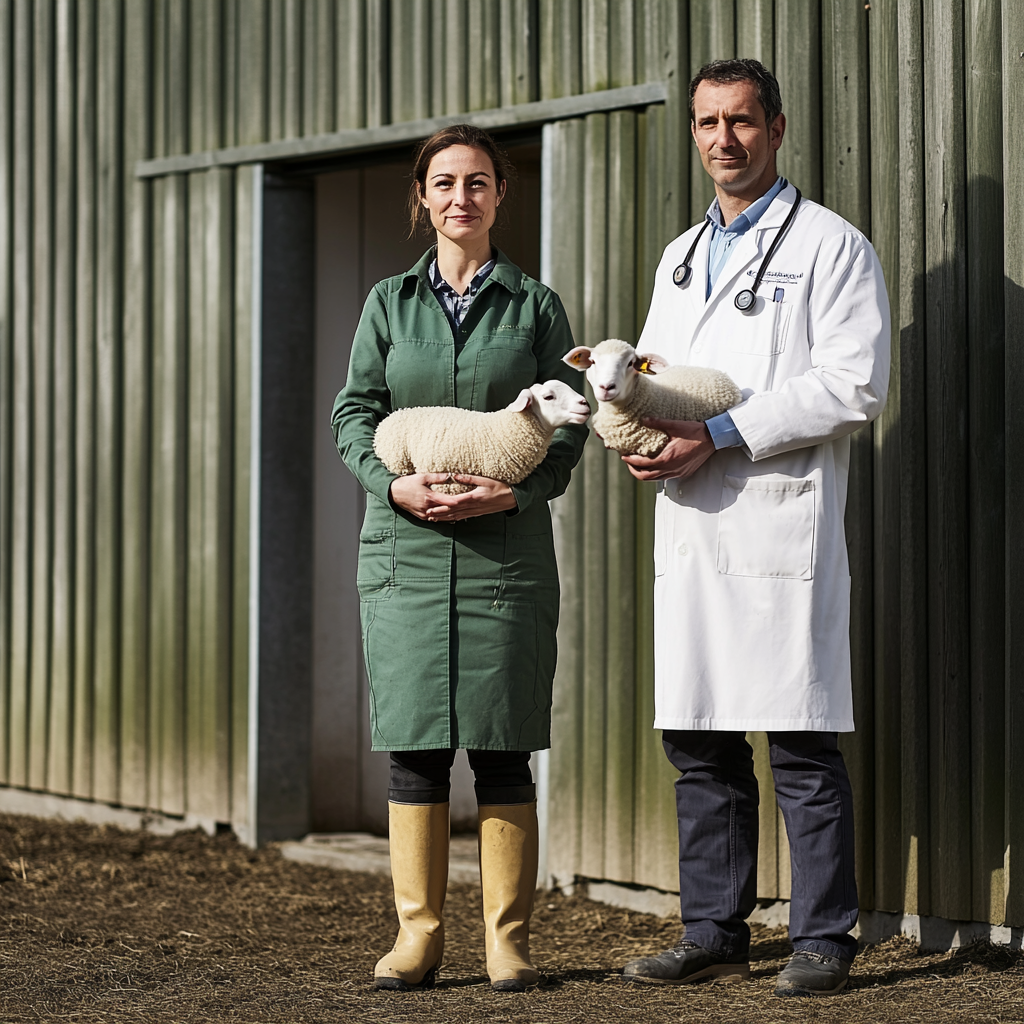
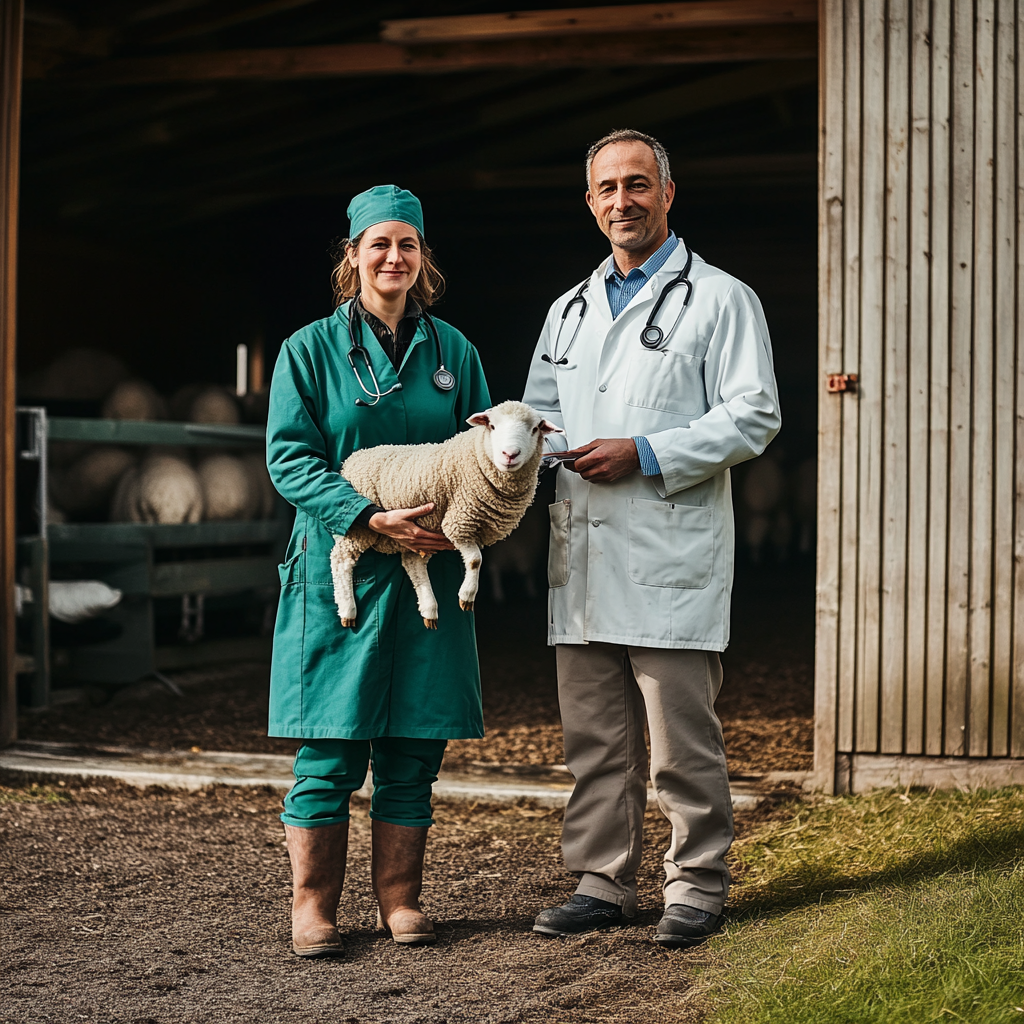
Understanding Clostridial Diseases in Sheep
What Are Clostridial Diseases?
Clostridial diseases are caused by bacteria of the genus Clostridium—anaerobic, spore-forming organisms that naturally reside in soil and the gastrointestinal tract of healthy animals. These bacteria produce powerful toxins that can rapidly cause tissue damage, systemic illness, and death. What makes clostridial diseases particularly insidious is that the spores can remain dormant in the environment for years, resistant to heat, cold, and many disinfectants, waiting for the right conditions to activate and multiply.
Common Clostridial Diseases Affecting Sheep
Several types of clostridial infections affect sheep, each with distinct symptoms and triggers:
1. Enterotoxemia (Pulpy Kidney Disease)
Caused by Clostridium perfringens type D, enterotoxemia often affects lambs on high-energy diets. The bacteria multiply rapidly in the intestine, producing epsilon toxin that damages the intestinal wall and allows toxins to enter the bloodstream. Clinical signs include:
- Sudden death without prior symptoms
- Neurological signs (if observed before death): excitement, convulsions, head pressing
- Affected animals may show signs of abdominal pain
- Post-mortem findings include pulpy, soft kidneys and excess fluid in body cavities
2. Tetanus (Lockjaw)
Caused by Clostridium tetani, tetanus typically enters through wounds or breaks in the skin. The bacteria produce a potent neurotoxin that causes:
- Progressive stiffness and rigidity of muscles
- Locked jaw (inability to open mouth)
- Erect ears and tail
- Hypersensitivity to external stimuli
- Difficulty walking with a stiff, stilted gait
- Eventually, respiratory failure and death
3. Blackleg
Though less common in sheep than cattle, Clostridium chauvoei causes blackleg, which presents as:
- Sudden lameness and swelling in affected muscles
- Hot, painful swellings that later become cold and insensitive
- Affected muscles make a characteristic crackling sound when pressed
- Rapid death, often within 12-48 hours of symptom onset
4. Malignant Edema (Gas Gangrene)
Caused primarily by Clostridium septicum, but also potentially by C. novyi, C. sordellii, and C. perfringens. This condition:
- Usually follows wounds or trauma
- Causes hot, painful swelling that spreads rapidly
- Leads to tissue necrosis and toxemia
- Results in death within 24-48 hours
5. Black Disease (Infectious Necrotic Hepatitis)
Caused by Clostridium novyi type B, black disease is associated with liver damage, often from liver fluke infestations:
- Sudden death, typically in well-conditioned adult sheep
- Minimal clinical signs before death
- Dark, swollen liver with gas-filled cavities on necropsy
- Often seasonal, coinciding with liver fluke activity
6. Braxy (Bradsot)
Caused by Clostridium septicum, braxy usually occurs during cold weather:
- Affects the abomasum (fourth stomach)
- Causes severe inflammation and toxemia
- Results in sudden death, particularly in younger sheep
- Often associated with frozen feed consumption
Six Essential Prevention Strategies for Clostridial Diseases in Sheep
1. Comprehensive Vaccination Programs
Vaccination stands as the cornerstone of clostridial disease prevention in sheep. Modern multivalent vaccines offer protection against multiple clostridial diseases simultaneously.
Vaccine Types and Coverage
Most commercial sheep vaccines provide protection against multiple clostridial diseases in a single product:
- 7-way vaccines: Protect against the most common clostridial diseases, including enterotoxemia types C and D, tetanus, blackleg, malignant edema, black disease, and sometimes braxy.
- 8-way vaccines: Include coverage for an additional clostridial pathogen.
Vaccination Schedule for Optimal Protection
For effective protection, follow these vaccination guidelines:
For Ewes:
- Vaccinate annually, 2-4 weeks before lambing to boost colostral antibodies
- New additions to the flock should receive two initial doses 4-6 weeks apart
For Lambs:
- First dose at 6-8 weeks of age
- Second dose 4-6 weeks later
- Annual booster thereafter
- Lambs from unvaccinated ewes may require vaccination as early as 2-3 weeks of age
Research Evidence: A study conducted by Lewis et al. (2018) demonstrated that properly vaccinated flocks experienced 95% fewer clostridial disease-related deaths compared to unvaccinated control groups.
2. Strategic Nutrition and Feeding Management
Dietary management plays a crucial role in preventing clostridial diseases, particularly enterotoxemia, which is often triggered by sudden feed changes or excessive concentrate consumption.
Gradual Feed Transitions
When changing diets:
- Introduce new feeds gradually over 10-14 days
- Particularly important when transitioning from forage to concentrate diets
- Monitor sheep closely during dietary transitions
Feeding Practices to Reduce Risk
- Divide daily concentrate rations into multiple small feedings
- Ensure adequate fiber in the diet (minimum 25% of dry matter)
- Provide consistent feeding times and quantities
- Avoid sudden access to lush pasture without adaptation
Feeder Design and Management
- Use sufficient feeding space (minimum 16 inches per adult sheep)
- Design feeders to prevent dominant animals from overconsuming
- Consider using creep feeders for lambs to control intake
Research Evidence: Research by Johnson et al. (2020) found that flocks implementing gradual feed transitions experienced 72% fewer cases of enterotoxemia compared to flocks with abrupt dietary changes.
3. Environmental Management and Biosecurity
Since clostridial organisms are ubiquitous in soil and the environment, proper management practices can reduce exposure and disease activation.
Pasture and Housing Management
- Rotate pastures regularly to reduce pathogen buildup
- Avoid grazing in areas known to have high clostridial spore concentrations
- Maintain clean, dry bedding in housing areas
- Implement proper drainage in paddocks and housing
- Regularly clean and disinfect lambing pens and equipment
Wound Management and Prevention
- Promptly clean and treat all wounds
- Use sterile equipment for procedures like castration, docking, and shearing
- Consider prophylactic tetanus antitoxin for high-risk procedures
- Implement low-stress handling to reduce injuries
Biosecurity Measures
- Quarantine new additions for at least 30 days
- Implement proper disposal of dead animals to prevent scavenging
- Control pests and wildlife that may spread pathogens
Research Evidence: A longitudinal study by Martinez et al. (2022) demonstrated that farms implementing rigorous biosecurity protocols reduced clostridial disease incidence by 68% over a three-year period.
4. Parasite Control Integration
Internal parasites, particularly liver flukes, can damage tissues and create favorable environments for clostridial proliferation. Black disease is strongly associated with liver fluke damage, making parasite control an integral part of clostridial disease prevention.
Strategic Deworming Programs
- Implement scheduled deworming based on regional risk factors
- Focus particularly on liver fluke control in endemic areas
- Use fecal egg counts to monitor parasite loads and deworming efficacy
- Rotate anthelmintic classes to reduce resistance development
Integrated Parasite Management
- Combine chemical control with grazing management
- Avoid grazing young stock on high-risk pastures
- Consider mixed-species grazing to break parasite cycles
- Maintain proper stocking densities to reduce parasite exposure
Research Evidence: Research by Williams et al. (2019) found that flocks with effective liver fluke control programs experienced 83% fewer cases of black disease compared to flocks without structured parasite management.
5. Health Monitoring and Early Intervention
While prevention is the primary goal, early detection and response to potential clostridial disease outbreaks can limit losses.
Regular Flock Monitoring
- Implement daily observation of all animals
- Train staff to recognize early signs of clostridial diseases
- Increase monitoring during high-risk periods (dietary changes, weather extremes)
- Establish protocols for reporting and responding to suspicious cases
Strategic Diagnostic Testing
- Perform necropsies on unexplained deaths
- Submit appropriate samples for laboratory confirmation
- Maintain detailed health records to identify patterns or risk factors
- Consider regular screening for liver fluke exposure in endemic areas
Response Protocols
- Develop emergency response plans for suspected outbreaks
- Maintain emergency supplies of appropriate antibiotics and antitoxins
- Have contact information readily available for veterinary consultation
- Consider prophylactic treatment of at-risk animals during confirmed outbreaks
Research Evidence: A study by Thompson et al. (2021) found that flocks implementing daily health monitoring protocols identified potential disease outbreaks an average of 36 hours earlier than flocks without structured monitoring, resulting in 67% lower mortality rates.
6. Tailored Prevention During High-Risk Periods
Certain production phases and environmental conditions increase the risk of clostridial diseases, requiring enhanced preventive measures.
Lambing Season Management
- Provide booster vaccinations to ewes pre-lambing
- Ensure proper colostrum consumption by all lambs
- Consider tetanus antitoxin administration for lambs born to unvaccinated ewes
- Implement rigorous hygiene in lambing areas
Weather-Related Risk Periods
- Increase monitoring during sudden cold snaps (braxy risk)
- Provide additional feed during extreme weather to prevent stress
- Ensure shelter availability during adverse conditions
- Avoid feeding frozen forages that may damage digestive tract lining
Production Transitions
- Implement preventive measures before weaning
- Use gradual transitions when moving from pasture to feedlot conditions
- Consider strategic antibiotic use before high-stress events (under veterinary guidance)
- Re-evaluate vaccination status before transportation or marketing
Research Evidence: Research by Anderson et al. (2023) demonstrated that implementing enhanced prevention protocols during identified high-risk periods reduced clostridial disease incidence by 78% compared to standard year-round protocols.
Developing a Comprehensive Clostridial Disease Prevention Plan
The most effective approach to clostridial disease prevention combines all six strategies into an integrated plan tailored to your specific operation. Consider these steps:
- Conduct a risk assessment of your farm, considering:
- Historical disease patterns
- Regional risk factors
- Flock management practices
- Environmental conditions
- Work with your veterinarian to develop a farm-specific prevention plan that includes:
- Customized vaccination protocols
- Feeding management guidelines
- Environmental control measures
- Monitoring schedules
- Train all farm personnel on:
- Disease recognition
- Implementation of prevention protocols
- Emergency response procedures
- Regularly review and update your prevention plan based on:
- Changes in flock composition or production goals
- New research findings
- Effectiveness of current protocols
By implementing these six essential prevention strategies through a comprehensive, integrated approach, sheep producers can significantly reduce the risk of devastating clostridial disease outbreaks and protect the health and productivity of their flocks.
Recommended Products on Amazon
Recommended Pet Products on Amazon
- Premier 1 Supplies Multi-Species Clostridial Vaccine
- Weaver Leather Sheep Halter for Medication Administration
- Neogen IDEAL Veterinary Syringe for Livestock Vaccinations
- TruTest Digital Livestock Scale for Accurate Medication Dosing
Frequently Asked Questions
FAQ: Clostridial Diseases in Sheep
Q: How quickly can clostridial diseases kill sheep?
A: Clostridial diseases are notorious for their rapid progression. Enterotoxemia (pulpy kidney) can kill seemingly healthy sheep within 2-12 hours of the first clinical signs. Other clostridial diseases like blackleg and malignant edema typically cause death within 24-48 hours. The rapid progression highlights why prevention is so critical—by the time symptoms appear, it’s often too late for effective treatment.
Q: Can humans contract clostridial diseases from infected sheep?
A: While most clostridial diseases affecting sheep are specific to animals, some can potentially affect humans. Tetanus (C. tetani) is zoonotic and can infect humans through wound contamination. Gas gangrene (C. perfringens and other species) can also affect humans but is rarely transmitted directly from animals. Always practice good hygiene when handling sick animals or performing procedures, and seek medical attention for any wounds contaminated by soil or animal feces.
Q: Is it possible to completely eliminate the risk of clostridial diseases in a flock?
A: Complete elimination of risk is virtually impossible since clostridial bacteria are ubiquitous in the environment, and their spores can persist for decades. However, through rigorous implementation of vaccination programs and the other prevention strategies outlined in this article, the risk can be reduced to very low levels. A comprehensive approach that includes all six prevention strategies provides the best protection possible.
Q: How long does immunity last following vaccination?
A: Immunity following clostridial vaccination typically lasts approximately 12 months, which is why annual boosters are recommended for adult sheep. However, young lambs may require more frequent vaccination due to their developing immune systems. Always follow the specific recommendations on the vaccine label and consult with your veterinarian about the optimal vaccination schedule for your specific situation and regional risk factors.
Q: Can sheep that have recovered from a clostridial infection develop natural immunity?
A: Unlike many viral diseases, recovery from a clostridial infection does not typically confer strong or long-lasting immunity. This is primarily because clostridial diseases are caused by toxins produced by the bacteria rather than by the organism itself. Additionally, most affected animals die before developing an effective immune response. Vaccination remains essential even if animals have previously survived a clostridial infection.
Q: Are certain breeds of sheep more susceptible to clostridial diseases?
A: While there is limited evidence for true breed-based genetic resistance to clostridial diseases, production type and management intensity often influence risk levels. Highly productive breeds on intensive feeding programs (particularly meat breeds with rapid growth rates) may have increased susceptibility to enterotoxemia. All breeds should be considered at risk and included in comprehensive prevention programs regardless of perceived natural hardiness.
Conclusion
Clostridial diseases in sheep , represent one of the most significant health threats to sheep flocks worldwide, capable of causing devastating losses with little warning. The ubiquitous nature of these bacteria in the environment makes exposure inevitable, placing the emphasis squarely on prevention rather than treatment. By implementing the six essential prevention strategies outlined in this comprehensive guide—vaccination, nutrition management, environmental control, parasite management, health monitoring, and targeted prevention during high-risk periods—sheep producers can dramatically reduce their risk of experiencing destructive clostridial disease outbreaks.
Remember that the most effective approach combines all six strategies into an integrated prevention plan developed in consultation with your veterinarian and tailored to your specific operation. Regular review and adjustment of your prevention protocols will ensure continued protection as flock dynamics, management practices, and environmental conditions change over time.
Protecting your flock from clostridial diseases requires vigilance and commitment, but the investment in comprehensive prevention yields substantial returns through reduced mortality, improved productivity, and peace of mind.
Looking for more expert advice on sheep health and management? Visit BlithePet for additional resources, guides, and professional recommendations to keep your flock healthy and productive.


